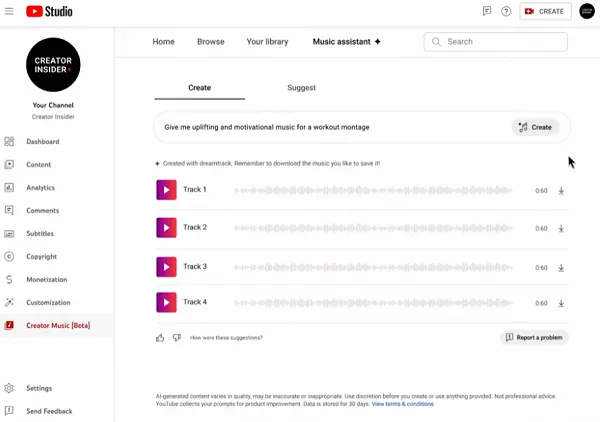Good day to you, fair American cousins and friends from across the Wonkesphere. On this auspicious day that is the first birthday of Those Cakes We Like, I intend to dazzle you with one of Great Britain’s greatest creations. Today’s recipe transcends class boundaries, so prepare to be transported to a land of fancy Victorian ladies and gentlemen who sup tea in their parlour every day (and they always stick their pinky finger out). But don’t get complacent, for as you step out of the door you may be accosted by a street urchin hawking the very same delicacy you have just partaken in for the lowly price of just sixpence each. Welcome, my friends, to the world of the crumpet.
There is a lot of debate as to the origins of the crumpet; Scotland and Wales both lay claim to it, however the first mention of a crumpet in written records dates back to 1382 and the writings of one John Wycliffe, a theologian and Yorkshireman. This mention of a crumpet bears little resemblance to the crumpets of today — it was in fact a cake that had curled at the edges whilst cooking, or “crumped.” So more of a baking accident than a delicious treat. It was the discovery of the capabilities of potassium carbonate (baking soda) as a raising agent for cakes during the Victorian period that led to the modern crumpet, a thick batter cake which is cooked on the stove top. These delicious treats are full of tiny tunnels as a result of the carbon dioxide produced by both the baking powder and yeast during the cooking process. The carbon dioxide forms bubbles which burst and, as the batter sets, form the tunnels which make a hot crumpet the perfect vehicle for delivering a hefty dose of butter straight to your hungry mouth. They can also be topped with jam/jelly, honey, golden syrup, or even cheese. As a small child I used to enjoy having them topped with Heinz baked beans as a lunch or light supper.
The crumpet is frequently mistaken for an English muffin by non-Brits; you should be aware that some of us get very offended by this as the two are very different in texture. In the English muffin the characteristic tunnels are absent, instead you have a more aerated bread-like texture. Some people also confuse crumpets with pikelets (just to confuse you even more); this is much closer to being accurate as both use the same batter. The only difference here is that crumpets are cooked in a ring, which allows them to be thicker, and also uniform in shape and size. Pikelets are essentially a free-form crumpet.
I think that’s enough confusing British culture for you.
This recipe makes between 12 and 14 crumpets, depending on the size of your crumpet/egg ring. The carbohydrate count is 17.3g of carbs per crumpet for a batch of 14.
Digital kitchen scales
Small saucepan
Mixing bowl
Clean dish towel
Whisk
Crumpet/egg rings
Pastry brush
Large frying pan
If you’re missing any essential baking equipment and are thinking of shopping at Amazon anyway, please use this here Amazon link that gives Your Wonkette a small commission.
400 ml milk
7 g (one packet) dried yeast
200 ml tepid water (slightly above room temperature, not hot)
1 tbsp sugar
300 g bread flour (bread flour is higher in protein than cake flour, if you’re unsure compare the nutrition information on the labels)
½ tsp baking soda
Vegetable oil for greasing the crumpet rings and frying pan
Toppings of your choice
Don’t worry, this is pretty easy.
Gently warm your milk in your small saucepan. You want it to be comfortably warm if you dip your finger into it. Turn off the heat and add your yeast, then leave it for 15 minutes. When you return to the pan you should notice a nice, thick foam. This is perfect as it means your yeast is now producing lots of carbon dioxide.
Mix your dry ingredients in your large mixing bowl and make a well in the centre. Now add your yeast mixture and your water. Using your whisk, start in the centre and mix in a circular motion, moving outwards, until the batter is well combined. You should end up with a smooth batter with the consistency of heavy cream.
Cover your mixing bowl with a damp dish towel and leave the yeast to work its magic for 45 minutes.
Brush your frying pan and crumpet rings with a little oil and pre-heat your frying pan on a medium heat. Place the crumpet rings into the pan and spoon in your batter until the rings are just over ¾ full. Leave the batter to cook for roughly 5 minutes, or until the crumpets are set enough that the bubbles leave holes when they burst. Now carefully remove your crumpet from the ring and flip it over, continue to cook for another 2-3 minutes. Remove from the pan and set aside. Now re-oil your pan and crumpet rings and repeat until you have used up all the batter.
Huzzah! You have made crumpets!
If you plan to eat your crumpets straight away then you can put the ones you plan to eat immediately back into the pan and cook for 2-3 minutes on each side. The rest of your crumpets can be frozen for up to a month. It’s best to wrap each crumpet individually before doing this in order to prevent freezer burn. To reheat your crumpets from frozen you just need to defrost in the microwave and then pop them in your broiler or toaster until they achieve the desired level of crispiness.
Serve your crumpets with plenty of good quality butter, and jam, golden syrup, or whatever toppings you’re craving. I find they make a lovely, healthy breakfast served with a handful of berries, a spoonful of low-fat crème fraiche, and a drizzle of honey.
Cup of tea is optional, but encouraged.
Cheerio, I shall return next month with a delicious, and very summery, flan recipe. Don’t forget to tip your waiter (or Your Wonkette).
If you feel like making a one-off donation to help keep Wonkette in cake (and other baked goods) recipes then this is the Donation Link you need.











































































